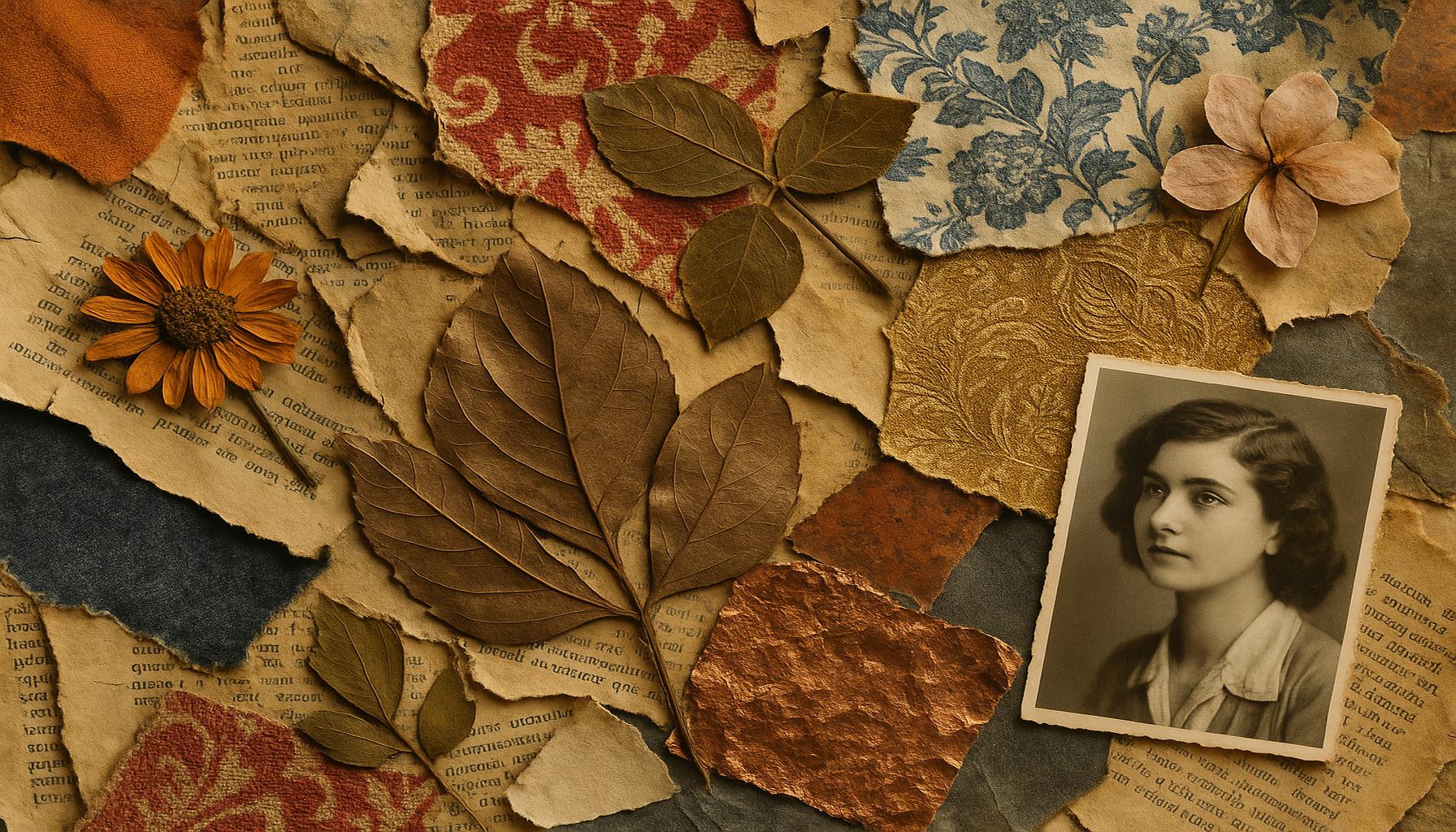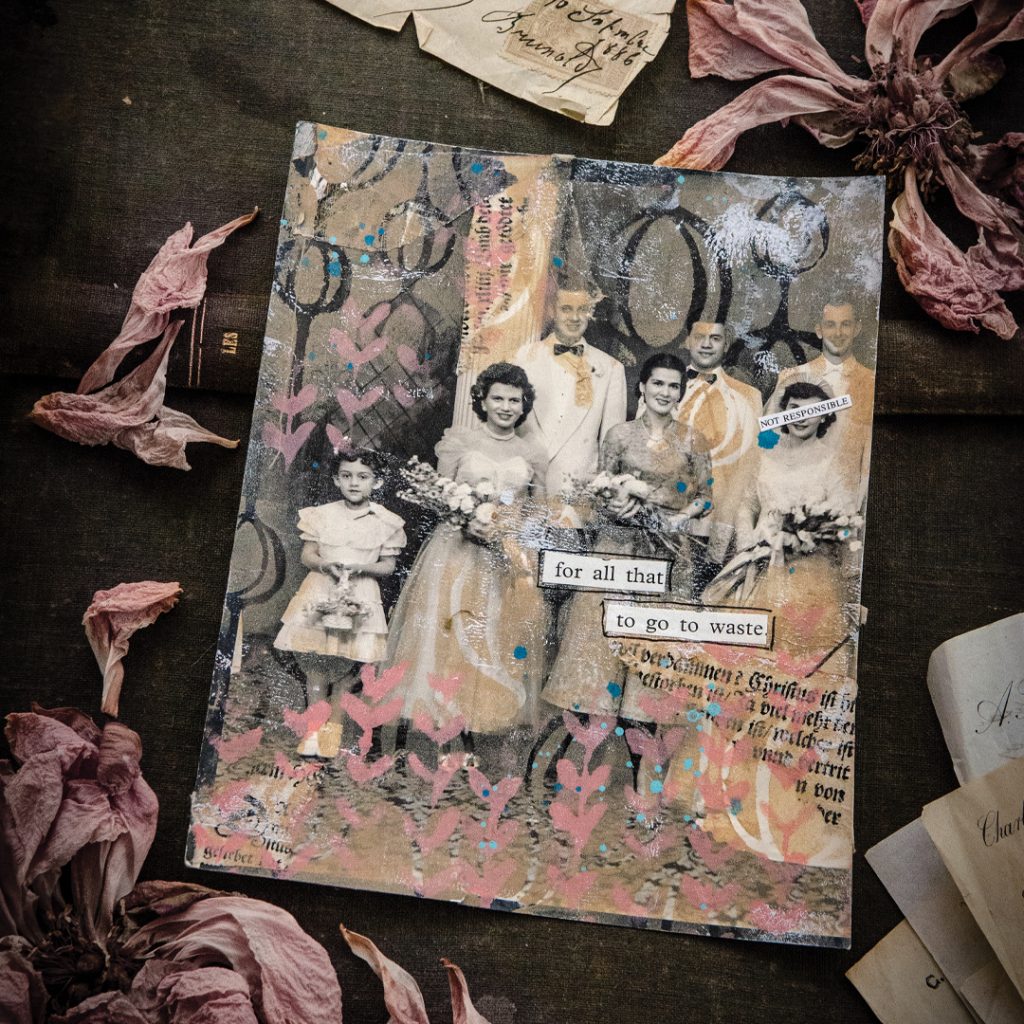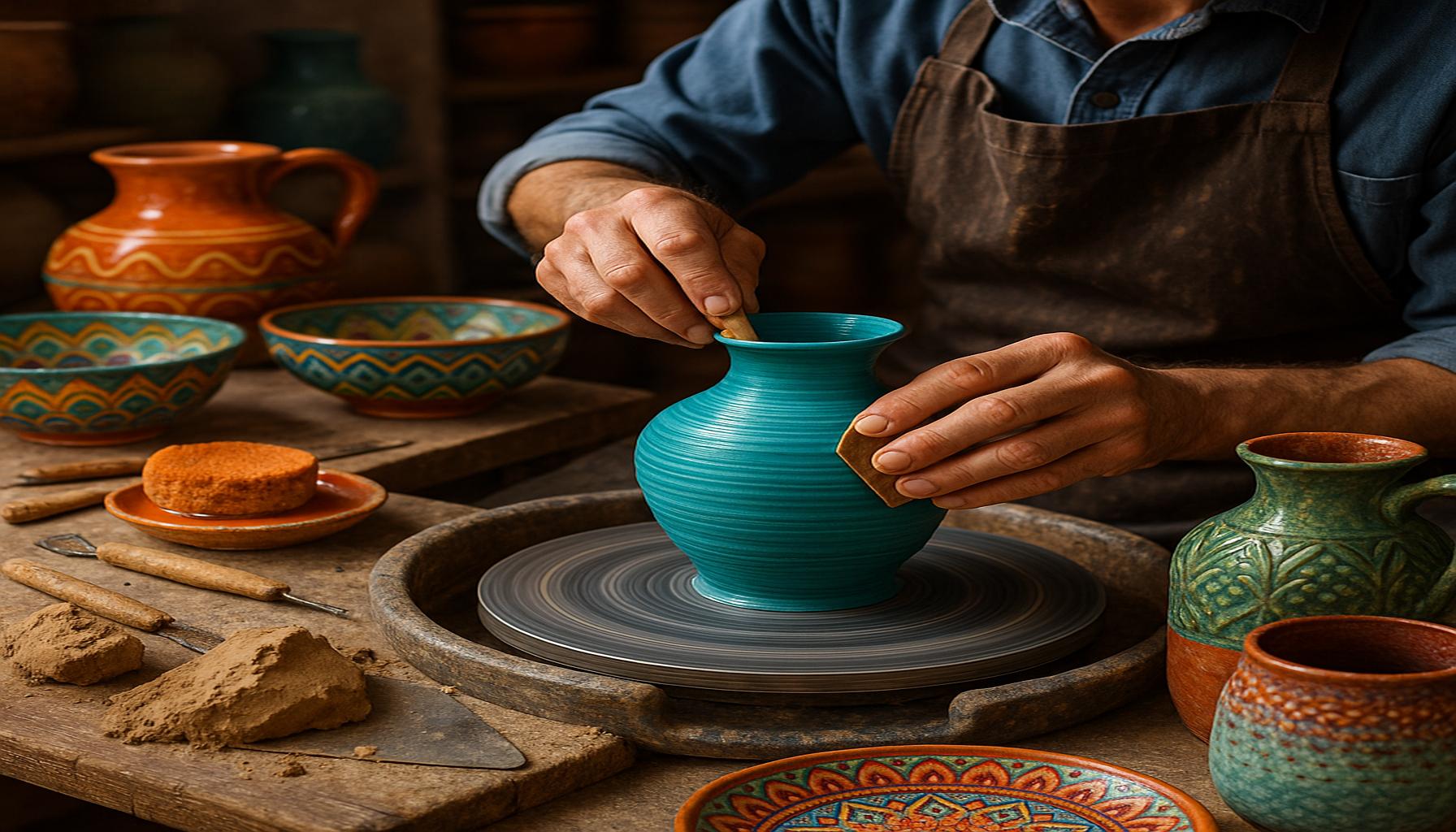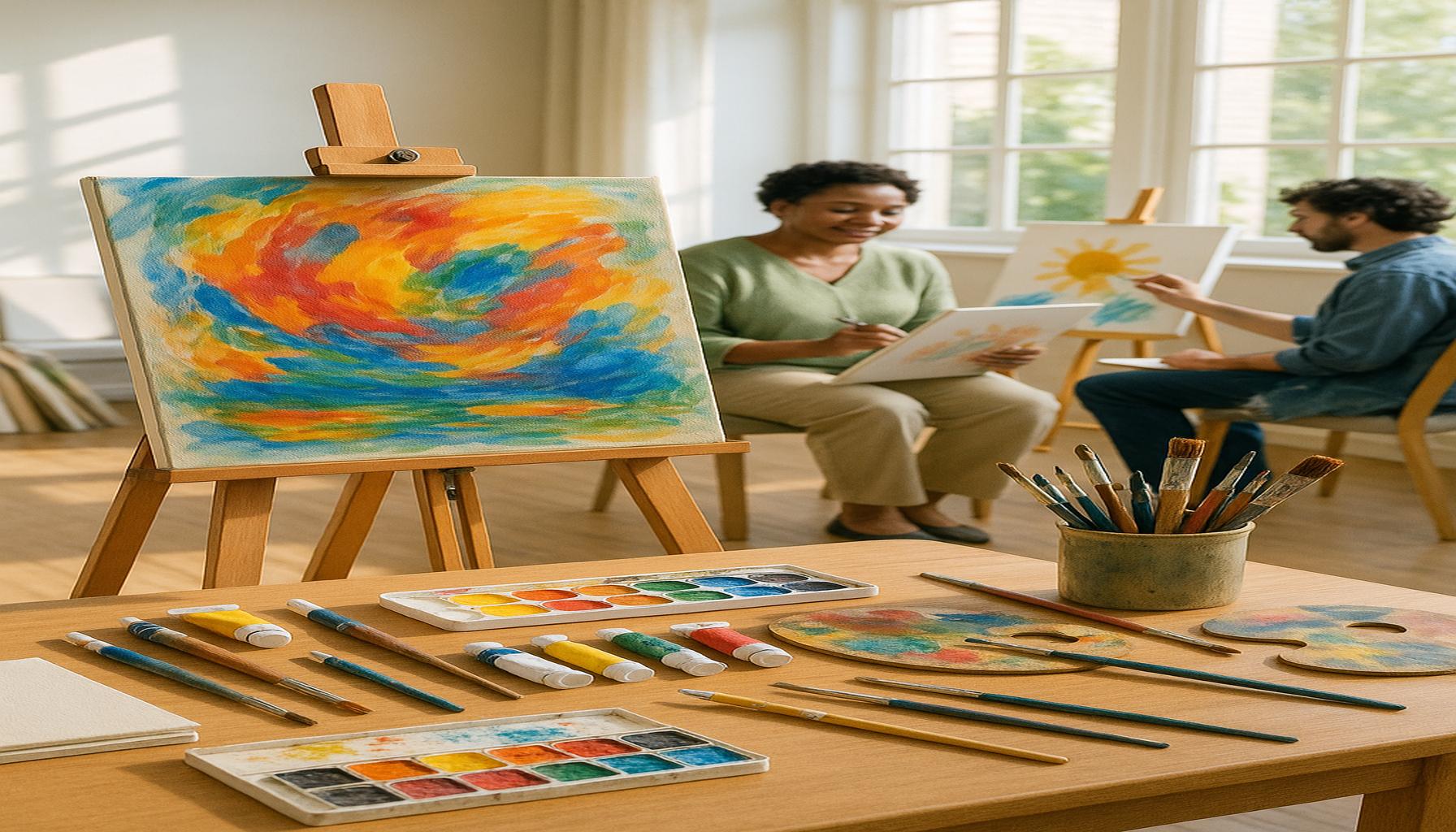The Art of Collage: Blending Textures and Stories into a Single Piece

Discovering Collage as an Innovative Art Form
The world of collage opens a vibrant gateway to creativity, inviting artists and enthusiasts alike to explore new dimensions of expression. By blending diverse materials such as photographs, paper scraps, fabric swatches, and found objects, collage transforms seemingly disparate pieces into cohesive artworks that resonate on multiple levels. This innovative art form allows for an endless spectrum of possibilities, from intricate compositions to bold statement pieces that reflect the creator’s personal journey and cultural influences.
Why Collage Captivates Artists and Enthusiasts
- Textural Exploration: One of the most compelling aspects of collage is its emphasis on texture. Artists can utilize materials with varying tactile qualities, such as the smoothness of magazine paper against the roughness of cardboard or the softness of fabric. This interplay creates visual intrigue and draws viewers in, prompting them to not only look but to also feel the work.
- Storytelling: Every element within a collage can act as a narrative device. For example, a vintage magazine cutout of a cheerful family may evoke memories of childhood, while a scrap of newspaper could reflect societal issues, merging personal experiences with wider cultural contexts. These elements weave together to tell a more significant story, encouraging viewers to engage and interpret the layers of meaning.
- Artistic Freedom: The beauty of collage lies in its lack of rigid guidelines. Artists are free to experiment with form, content, and technique, breaking away from conventional artistic disciplines. This democratization of art leads to unique styles and expressions, exemplified by artists like Romare Bearden, who used collage to explore African American culture, or contemporary artists like Emma Wolukau-Wanambwa, who challenges social narratives through her collage work.
This dynamic approach has gained considerable traction across the United States, inspiring both budding creators and seasoned professionals. In college classrooms, students are encouraged to explore collage as a vital medium, often leading to innovative projects that challenge traditional art forms. Furthermore, established galleries and art shows are increasingly showcasing multipart exhibitions that highlight the transformative potential of collage, such as the annual Collage Fest in Los Angeles, which celebrates creativity and community involvement.
What You’ll Learn
- Techniques for blending different materials effectively, utilizing paint, glue, and layering to achieve depth.
- Identifying stories within visual textures and understanding how to choose elements that harmonize with your intended message.
- Creating impactful compositions that resonate with audiences, focusing on balance, contrast, and color theory to enhance visual appeal.
Join us as we delve deeper into the art of collage and discover how the rich combination of textures and storytelling elements can lead to extraordinary pieces of art. This journey promises to unlock your creative potential and immerse you in the multifaceted world that collage offers. Whether a novice or a veteran artist, there’s always more to explore in this lively medium.
DISCOVER MORE: Click here to delve into the evolution of digital photography
Understanding the Essentials of Collage Techniques
To truly appreciate the art of collage, one must grasp the fundamental techniques that enable artists to blend textures and narratives seamlessly. The collage process involves selecting and juxtaposing materials that not only appeal visually but also resonate thematically. Differences in texture, color, and form play a crucial role in creating a cohesive piece that tells a story.

Material Selection: The Building Blocks of Collage
Choosing the right materials is an essential step in the collage-making process. Artists often gather an eclectic assortment of objects that can range from traditional mediums like paper and fabric to more unconventional elements such as metal scraps or natural objects. When selecting materials, consider the following:
- Contrast: Using materials with varied textures, such as rough and smooth, can create visual interest. For instance, pairing glossy magazine clippings with coarse burlap can draw the viewer’s eye and create depth in the work.
- Color Palette: Cohesive color schemes enhance the visual appeal of a collage. Artists often limit their choices to specific color families or use contrasting colors to evoke emotion and highlight certain features within the piece.
- Weight and Dimension: Different materials possess varying weights, which affect how they interact. Layers of lighter paper can float above a heavier canvas, while three-dimensional objects can add physical depth, inviting viewers to engage with the work from multiple angles.
Layering Techniques: Crafting Depth and Complexity
Layering is a critical technique in the art of collage. It involves placing materials over or under one another to create a complex tableau. The principles of layering can help bring your collage to life:
- Background First: Start by establishing a background that sets the tone. This layer can include painted surfaces or textured paper. From there, add elements progressively, which allows for a more controlled composition.
- Building Up: Gradually build layers, using glue or multimedia methods to affix each piece. Consider both transparent and solid elements to allow interactions between layers, which can result in unexpected effects.
- Finishing Touches: Don’t overlook details. The final touches, whether through subtle paint applications or added embellishments, can tie the entire piece together, enhancing the visual narrative.
By understanding these essential techniques of material selection and layering, artists can master the craft of collage, turning simple components into vibrant expressions of emotion and storytelling. With each piece, they have the opportunity to convey complex messages that resonate with the viewer on a profound level.
The beauty of collage lies in its limitless potential, allowing artists to transcend traditional boundaries and express themselves in ways that speak to both personal and universal experiences. This dynamic form invites continual exploration, making it not just a method of creation but a journey into the depths of material and meaning.
| Advantages | Description |
|---|---|
| Creative Expression | Collage allows artists to combine varied materials, enabling a unique voice and personal narrative in their artwork. |
| Interdisciplinary Benefits | This art form enhances not only artistic skills but also critical thinking and storytelling abilities by merging different artistic disciplines into one cohesive piece. |
| Accessibility | Collage techniques can be learned and practiced by anyone, making art more accessible to a wider audience. |
| Historical Significance | Collage has a rich history that reflects cultural movements, making it a dynamic medium to explore social and historical contexts. |
The topic of collage art taps into a broad spectrum of personal and societal narratives. Through the act of blending textures and images, artists not only get to express their thoughts but also connect to historical stories. For example, movements like Dadaism emphasized the significance of randomness and absurdity, which can still inspire modern artists to view their world through a different lens. Furthermore, working with a variety of materials encourages artists to innovate and experiment, allowing their creativity to flourish. With access to digital tools, collaging techniques have evolved significantly, making it an ever-relevant art form. As enthusiasts delve deeper into the world of collage, they discover endless possibilities for interpretation, making each piece a unique tapestry of textures and stories waiting to be unveiled.
DISCOVER MORE: Click here to learn about collaboration among musicians
The Emotional Narratives of Collage
In the realms of collage art, it is the emotional narratives that breathe life into the work, transforming fragmented materials into a cohesive story. Each element within a collage can represent a different layer of meaning, inviting viewers to dive into intricate dimensionality. Artists increasingly use collage as a medium to communicate personal experiences, societal issues, or even deep-seated cultural narratives.
Storytelling Through Symbolism
Collage is more than just an aesthetic pursuit; it is an invocation of symbolic representation. Each piece an artist incorporates can carry its own story. For example, a vintage photograph might evoke nostalgia or loss, while a newspaper clipping could signify current events and social commentary. Understanding the power of symbolism allows creators to weave complex narratives that resonate with an audience. Artists must ask themselves:
- What do my materials represent? Consider not just the literal objects but the emotions or memories they might invoke in the viewer.
- How do contrasting symbols interact? Juxtaposing images representing conflict and harmony can provide a richer narrative than a singular focus.
- What emotional response do I want to elicit? Mixed media can amplify feelings—using sombre colors can evoke despair, while brighter tones can suggest hope.
Embracing Contemporary Themes
The modern collage artist is drawing inspiration from a diverse array of contemporary themes, using their canvas as a platform for commentary and critique. Environmental issues, identity politics, and the intersection of technology and humanity are prevalent topics. Many artists have taken to social media and platforms like Instagram to showcase their works, inviting public discourse and engagement, which further enriches the narrative depth of their collages.
One striking example is the work of artists like Kehinde Wiley, who has successfully blended traditional portrait styles with contemporary storytelling, employing collage techniques to challenge societal perceptions of race and identity. By layering cultural references and historical contexts, Wiley creates a conversation around the role of representation in art. This demonstrates how modern collage can act as a vehicle for reflection on personal and collective identities.
Experimentation and Innovation in Collage
Moreover, the art of collage encourages artists to innovate beyond the conventional boundaries of design. Artists are increasingly integrating technology into their works, exploring digital collages that can bring new dimensions into traditional practices. Software like Adobe Photoshop or Procreate allows for the manipulation of textures and images in ways that can expand one’s creative possibilities.
Additionally, interactive collages are gaining popularity, inviting viewers to engage with the artwork physically or digitally—sending the message that art is not a solitary experience but an interactive journey. Artists can utilize augmented reality or create installations that exist within specific environments, altering perceptions based on location and audience interaction.
The continuous evolution of collage not only illustrates the diversity of artistic expression but also engages the viewer in an ever-challenging dialogue that enriches both the creator’s intention and the audience’s interpretation. It showcases that each piece does more than blend textures; it tells a story waiting to be discovered, analyzed, and felt profoundly by both the artist and the observer.
DISCOVER MORE: Click here to unlock watercolor techniques
Conclusion: The Transformative Power of Collage
In conclusion, the art of collage stands as a compelling testament to the fusion of materials and stories that transcends conventional artistic boundaries. As we have explored, particularly through the emotional narratives woven within each layered piece, collage allows artists to construct multi-dimensional experiences that resonate on both personal and societal levels. The intricate dance between symbolism and personal interpretation invites viewers to participate actively in the story, igniting curiosity and provoking deeper reflection.
The modern collage artist, equipped with both traditional and digital tools, has the unique advantage of accessing a vast array of textures and themes that reflect the complexities of today’s world. From identity politics to pressing environmental issues, collage acts as a vibrant canvas where pressing societal dialogues unfold. The innovations within this medium, including the integration of technology and interactive elements, further ensure that the art of collage remains grounded in contemporary relevance while continually challenging the audience’s perception of art itself.
As this artistic practice evolves, it invites both artists and viewers to embrace and explore the narratives that emerge. The possibilities for storytelling through collage are boundless—each work created is a slice of life, a commentary, or a celebration waiting to be unearthed. In a world increasingly in need of connection and understanding, the art of collage serves as a poignant reminder of the beauty in our shared stories and experiences, urging us to appreciate the intricate tapestries we weave through art. As you reflect upon the diverse motives and profound encounters embedded within your own interactions with collage, consider how this unique art form continues to shape our understanding of reality and narrative.



